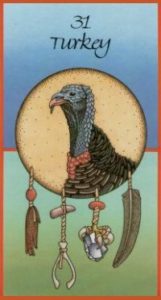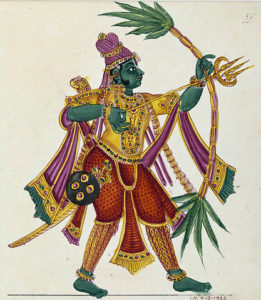The Four Turkeys of Abundance and The Purusharthas
I saw these wild turkeys wandering through my “yard” (woods) earlier this year. Actually, I had begun seeing a lot of turkeys grazing up and down the hill fairly frequently. After seeing a group of fourteen together one day, I pulled out my animal wisdom medicine cards to check the significance of this totem. “Give-away,” it said. I was reminded that, of course, turkeys represent the spirit of giving and abundance. As we are reminded on American Thanksgiving, the turkey gives his own life to nourish others and provide abundance. He signifies the honor in those with the most sharing what they can with those who have less.
Something about these turkeys struck me this day, as the four of them let me wander closely behind. In thinking about abundance and the give-away idea, I was reminded of the Vedic concept of the purusharthas, or the four aims of life. This is a traditional yogic concept that outlines the general human pursuits we follow in order to live a balanced and fulfilling life of purpose. The four aims are: dharma (duty, truth), artha (material prosperity), kama (pleasure), and moksha (spiritual liberation). Each of these Sanskrit words and the concepts behind them may be investigated and discussed to great end, and there is much literature on the subject, but this will serve as a general introduction, based on my own experience and study.
What is interesting, as relative to Jyotish or Vedic astrology, is how these aims relate with the twelve houses in the individual natal chart. The houses represent twelve major areas of life through which everything in our conscious and subconscious lives can be understood. Of the twelve, three relate to dharma, three to artha, three to kama, and three to moksha. Each of the four pursuits are indicated once on the individual level, the interpersonal level, and the societal or universal level. It is said that to have a truly fulfilling life, we carry out karma (actions) towards all four aims of life.
Dharma
Dharma most generally indicates the idea of right living. It represents the idea of doing what is right, and living in truth. This concept is often loosely translated as duty or purpose, which has nuances in itself. We have many dharmas that are unique and individual, in the various roles we play in life. We may perform the dharma of being a mother in some of our actions, and that of a sister, a daughter, a partner, a friend, a teacher in others. My teacher always reminds us that we also have a para-dharma, a higher purpose, which is to know the divine. To live in harmony with the universe we do our best to know our dharma and fulfill it with love and joy. When we give ourselves through our unique purposes, we contribute to the functioning of the world as we know it.
The first house in one’s natal chart is the dharma house of the individual level. This represents all aspects of our general experience, our individuality, and our identity. We must discover and follow our personal truth here to find fulfillment. Dharma on the interpersonal level lies in the fifth house, which indicates our creativity. It shows what we manifest into the world from our love, and most specifically indicates children and romantic relationships. On the universal level, dharma plays out through the ninth house, the place of learning, teaching, and philosophy. Through the ninth house we can share our purpose at large through higher education and philosophical study.
Artha
Artha represents the idea of fulfilling a purpose in the material world. This includes the work that we do as professionals, as well as the material prosperity we gain from it. It can be a complex issue from a yogic perspective, but most simply suggests that work, income and financial security are valid pursuits (certainly for householders, as opposed to ascetics or renunciates). In my mind that certainly doesn’t validate luxurious excess, or the degree of wealth discrepancy that we see in the world today, but it means that it’s okay to make an offering and live comfortably. Following the turkey’s symbolism of giving, we should remember that part of gaining worldly success also lies in the giving.
In the Vedic astrology chart, the second house shows artha on the individual level. This house represents our money and possessions in general, as well as the family of origin and our immediate surroundings. The sixth house shows material pursuit on an interpersonal level. Here is where we need to do the hard work to support what we love and create, through things such as mundane tasks, chores, and standing up to those who challenge us. On the broader perspective we pursue artha through the tenth house, the place of career. The tenth house signifies what we put out into the world and the public arena.
Kama
Kama is actually the name of desire personified as a Hindu deity (aka Kamadeva, similar to Eros or Cupid). We are all divine sparks, but the universal design placed us divine beings here to live a human experience. Seeking fulfillment in desire, pleasure, and human love is certainly part of that. I would also argue that without this our yogic pursuits would be lacking, as observance of the mind’s desires seems fundamental to the perceived struggle against them. The desirous mind is part of what makes us human, and part of humanity’s aims as indicated by Vedic thought. Imagine that when we feel abundant in pleasure (not lustful), how much more love we are able to give to the world and those around us.
The third house in the astrological chart indicates our personal desires, our likes and dislikes, our hobbies, and our gut sense of “want.” The seventh house, the house of relationships, is where we pursue achieving pleasure while dancing with another person. This includes romantic relationships and sex, but it also represents the idea that to be happy around anyone–a friend, a business partner–a certain degree of compromise is necessary for both parties to find happiness. On a societal or universal level, we pursue desire through the themes of the eleventh house. Here we find our hopes and dreams, our community and friends, and our visions for and service to the world.
Moksha
Moksha is the idea of spiritual liberation, freedom, or the breaking of bondage. The fourth house is the dharma house of the individual level. It represents our innermost heart space (as well as personal spaces like our home and vehicles). It is through the fourth house and the heart that we find peace at the individual level. To find this, we must often break free from the bonds of attachment we have to our individual desires (3rd house), possessions (2nd house), and even to what has happened to us (our experience, 1st house).
The eighth house shows liberation on the interpersonal level, and can certainly be a difficult one. It represents sudden change, which can include death, divorce, and the breaking of relationships. This is also the house of transformation, however, when we begin to break free from the bonds of both our individual and interpersonal attachments. We can then begin to orient ourselves towards universal pursuits and consciousness, in the 9th-12th houses.
 The twelfth house, the house of loss, is the ultimate moksha house, where we pursue total liberation from our worldly life, karma, and the cycle of birth and death. It is here we can attain self-realization, higher knowledge, and divine communion. We actually experience the twelfth house through many moments in our lives, long before death, however. The twelfth house is the place of sleep, meditation, subconscious states, and the pre-natal state. It also represents other kinds of escapes from the daily experience, such as television, screens, intoxicants, retreats, hospital or jail stays, and foreign travel. When we have a strong twelfth house in the natal chart, it is of utmost importance to activate the higher potential of this house, which can lead us towards actual spiritual liberation.
The twelfth house, the house of loss, is the ultimate moksha house, where we pursue total liberation from our worldly life, karma, and the cycle of birth and death. It is here we can attain self-realization, higher knowledge, and divine communion. We actually experience the twelfth house through many moments in our lives, long before death, however. The twelfth house is the place of sleep, meditation, subconscious states, and the pre-natal state. It also represents other kinds of escapes from the daily experience, such as television, screens, intoxicants, retreats, hospital or jail stays, and foreign travel. When we have a strong twelfth house in the natal chart, it is of utmost importance to activate the higher potential of this house, which can lead us towards actual spiritual liberation.
When we achieve abundance and fulfillment here, we have one of the greatest gifts that we can then give in turn: wisdom. Should we be blessed to achieve true liberation, may we follow the exemplar of the great saints and sages. They stay on earth to teach and inspire, to love and serve, until every last one of us reaches the ultimate state of moksha. We are only as strong as our weakest link, and we are all connected by the same divine thread.
Each one of us wants to feel abundance in our lives. We will follow paths toward it through dharma, artha, kama, and moksha. When we count our blessings and offer gratitude, we will feel more abundant in certain areas, and perhaps less so in others. We can give thanks for what we do have, and do our best not to dwell on the areas where we are lacking. We should also keep faith and continue to pursue our dreams of fulfillment in all areas of life. Feeling completely “fulfilled” is a tall order before reaching said “ultimate liberation” mentioned above. Until then, we hopefully find inspiration to remain grateful, and to give away what we can to support others, as demonstrated by turkey medicine.
Did you like The Four Turkeys of Abundance & The Purusharthas? Please Like, Comment, and Share!
I intend to turn this into a longer piece, so if you have comments or other relevant articles, please feel free to post or send me a private message! Namaste.



